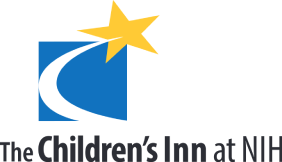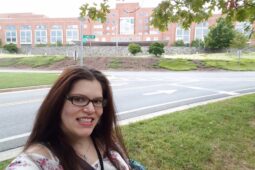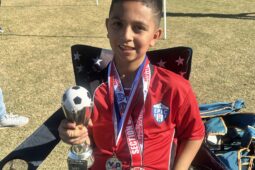Looking for the Light
Faith guides family’s battle with Dock8 syndrome despite years of struggle and loss
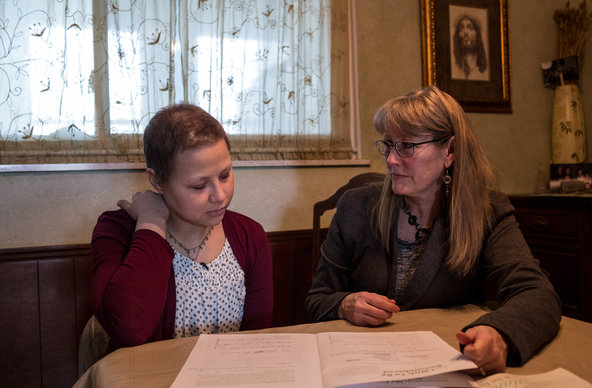
Karly and her mother Tammy prior to the transplant that saved her life.
As a young girl, Karly knew that something was wrong. She looked normal from the outside – unlike her oldest sister Kelsey, whose skin belied the battle she was fighting against an unknown disease. But her insides were roiling. Constantly in and out of doctors’ offices dealing with one ailment or another, Karly knew that even though her symptoms were different, she was dealing with the same thing her sister was. So she looked up to Kelsey, and relied on her to see her through the struggle.
“In Philippians, it says that God will provide all our needs,” the girls’ mother, Tammy, said. “I know that God directed us to the NIH.” Tammy contacted the team of Dr. Steven Holland at the National Institute of Allergy and Infectious Diseases (NIAID) at the National Institutes of Health. Karly and Kelsey had been examined by doctors all over their home state of Indiana with no answers, but the NIAID team’s response immediately encouraged Tammy and her husband, Tracy. It was February of 2001 and the girls – two of five children with a sixth on the way – flew to NIH with their mom and stayed at The Children’s Inn.
Karly was six and Kelsey was 11 when they made that first visit. Doctors thought it might be Job’s Syndrome, a rare primary immunodeficiency that is a genetic mutation of DNA. However, they were not confident in the diagnosis.
The Inn was a welcoming oasis for Karly, Kelsey, and mom. Karly remembers taking advantage of all the amenities over the years, from the playground to the teen lounge. Most important, though, were the people they met. “They made me feel like I could be myself,” she remembered. The girls made lasting friendships with other families staying at The Inn and staff members and volunteers whom they would see over the years.
Tammy added: “The Children’s Inn was a favorite place when we came [to NIH]. It allowed me to focus on the girls in the hospital. All along the way, we experience light from others, hope from the doctors, and love from our support groups.”
The medical team at NIAID and the people at The Children’s Inn made the whole family feel comfortable and confident, but it still took several years for the answers they were seeking to emerge. Finally, in February of 2009, with Dr. Alexandra Freeman having taken over as the lead of the family’s medical team four years earlier, Karly and Kelsey were diagnosed with Dock8 Immunodeficiency Syndrome. This rare immune disorder had just been discovered due to their study.
Though they were relieved to finally know the cause of their ailments, the family learned that the news was still not good. Along with Karly and Kelsey, nine other young people were diagnosed with Dock8 upon its discovery at that time, a few of whom had already passed away by their early twenties. And Kelsey was now 21 years old. The clock was ticking.
Dock8 deficiency often leads to the development of cancer, and in November of 2009, now 15 years old, Karly was diagnosed with stage four Burkitt’s Lymphoma. Despite this harrowing news, Tammy found light and remained faithful that there was a greater a plan for her family. “Dr. Freeman kept me involved in the process,” she explained. “The collaboration made me feel a part of what was happening to my girls.”
Despite the cancer, doctors determined that Karly was stable. The more pressing concern was Kelsey, already at an advanced age in the tiny Dock8 community. So when the medical team recommended an experimental double cord blood stem cell transplant, doctors agreed that the older sister should go first. Kelsey, her mother remembered, was entirely on board to receive the experimental treatment.
By the fall of 2010, the world’s first double cord blood stem cell transplant was conducted on Kelsey. Bravely facing her role as a medical pioneer, Kelsey battled for four months after the procedure was complete but finally succumbed to her disease on February 2, 2011, almost exactly 10 years after her first trip to the NIH. She was 22 years old.
The loss of her older sister was devastating for Karly, who was profiled on The Inn’s website and the New York Times around this time. From an early age, Kelsey’s disease had presented itself in the form of lesions and sores on her skin, as well as lung infections. It was clear to anyone that she was gamely fighting a severe illness. The same was not true for Karly. The fourth child of Tammy and Tracy, Karly’s illness was mostly internal in her younger years, but as she aged she began showing the same signs as Kelsey. Later, the family would learn that their other four children also carry a recessive Dock8 trait but avoided the full mutation that leads to the immunodeficiency.
But Kelsey had always known what her little sister was going through and knew that part of her job as a big sister was to help her through it. That mentality remained until the day she passed away, having given doctors and researchers as much time as she could to study her body and figure out how they could do things differently to save her sister. She donated her body to the NIH to continue that research after her passing.
“Most people might view Kelsey’s death as a failure, but we look for the lessons learned, for the progress, the betterment,” said Tammy. “Nobody was to blame. And we still had hope.”
For the time being, doctors at NIAID did what they could to treat the issues that arose with Karly. By May 2012, she graduated high school and began taking classes to become a physical therapy assistant, a career she chose largely thanks to the care she received at the NIH. Even the seemingly simple act of taking classes was a challenge to be faced head-on.
“It was tough, but we are tough,” smiled Tammy. “There is always a way through Christ who strengthens us. I went to her classes with her to deal with her IV infusions. She did Zoom classes in the ICU, and we persevered. It’s what we do.”
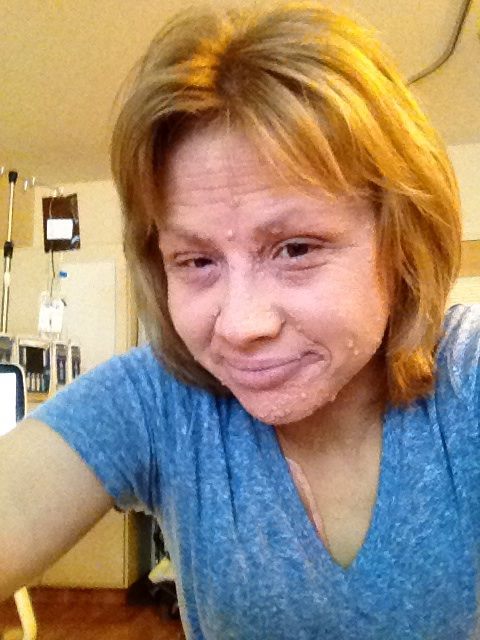
Karly in the days leading up to her transplant at NIH
By 2014, doctors had developed another transplant option. This one had been successful in Europe. Like her sister, though, Karly would be the first recipient in the United States for this disease. “Did we want to be first again? No!” laughed Tammy. “But no one else was doing it, and Karly didn’t have much more time.”
Karly prayed and remembers God giving her peace. Karly, at the age of 20, moved forward with the Haplo bone marrow transplant in July 2014.
This time, it was the success the family had been praying for. Now 29 years old, Karly is almost 10 years post-transplant, and her body has continued to heal. Even an adrenal insufficiency that doctors did not expect to be impacted by the transplant has been completely healed, and all her allergies from birth and her bout with cancer been cured.
Nearing 30, the age at which she will stay elsewhere when making her annual check-up visits to NIH, Karly has fond memories of her time at The Children’s Inn. “The people there are part of our family,” she said. Even if she is staying elsewhere, she plans to visit The Inn, say hi to people she recognizes, and do what she can to help new families amid their own struggles.
Karly thinks about her sister every day, now 13 years after her passing. She wonders what life would have been like had Kelsey gotten the same miracle that she was given. But her faith in God’s plan lets her know that her sister has no regrets about how things turned out. The lessons learned from Kelsey’s battle helped doctors in the fight to save Karly and others just like her. “All we have been through has been a gift,” their mother said. “It has shaped who we are for generations to come.”

The family gathers for a wedding with Kelsey’s photo present at the celebration.
